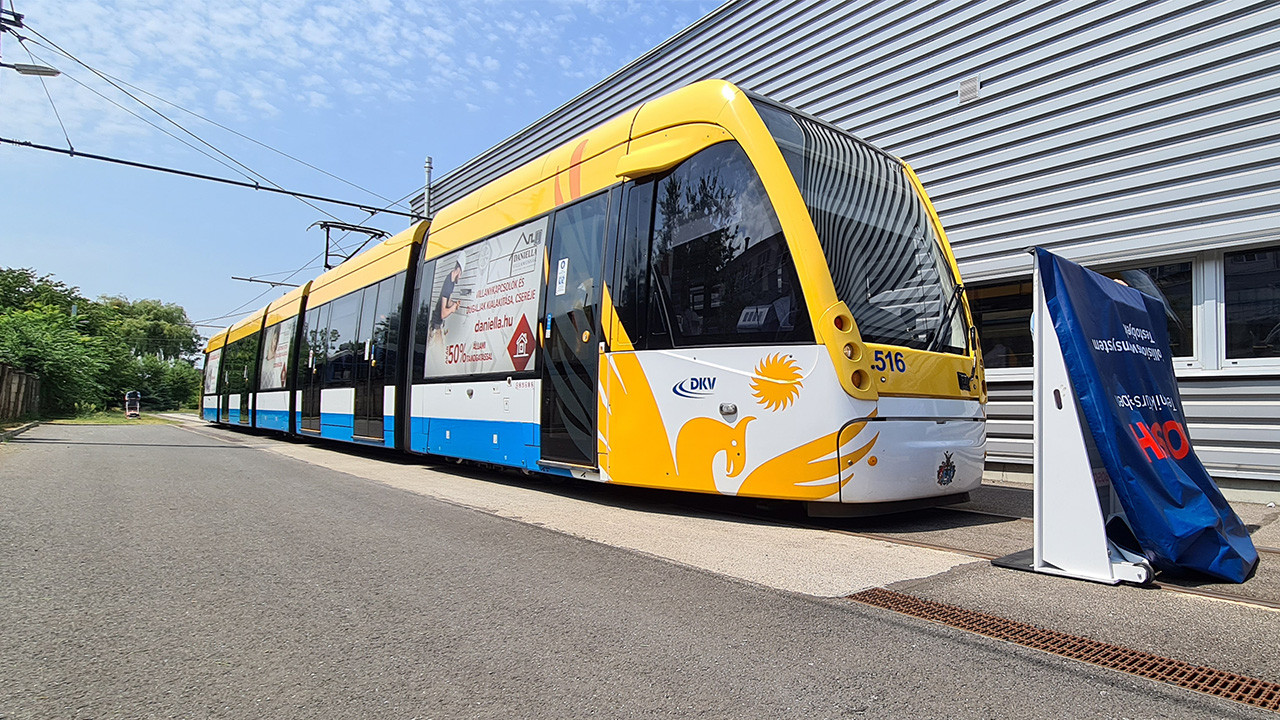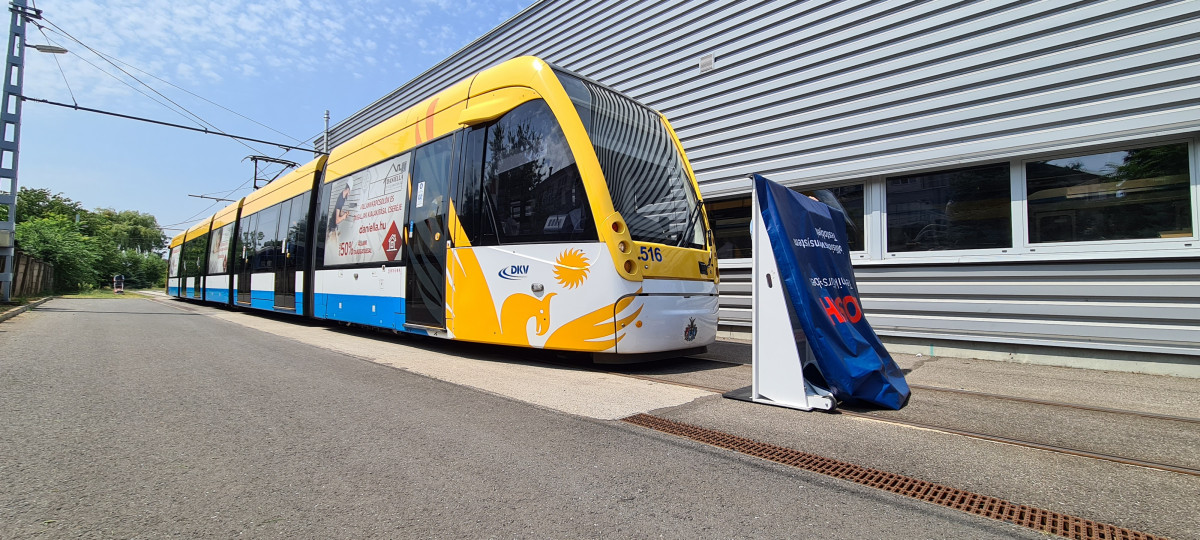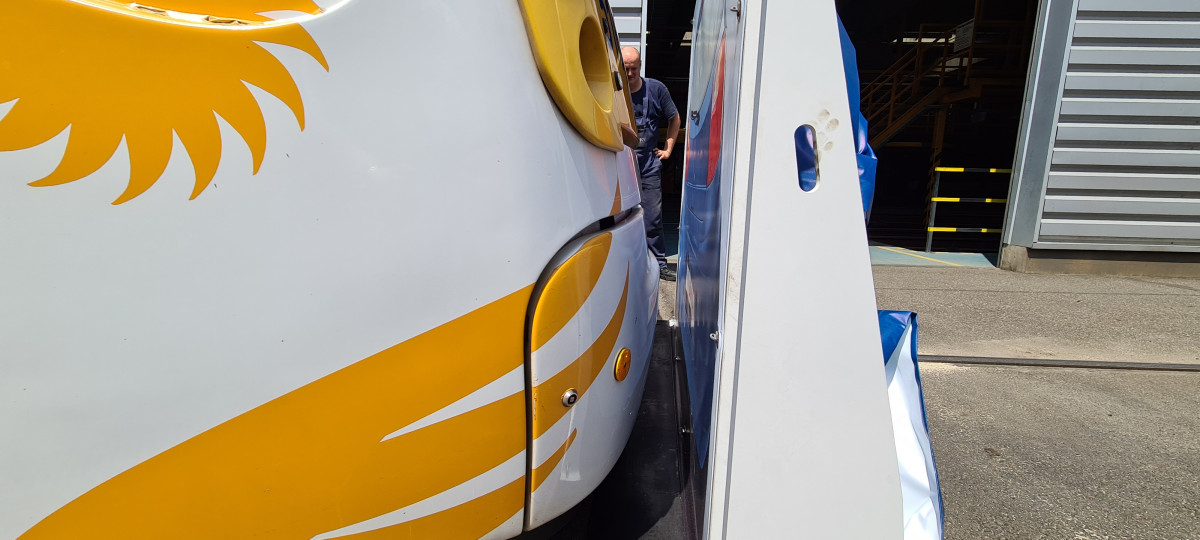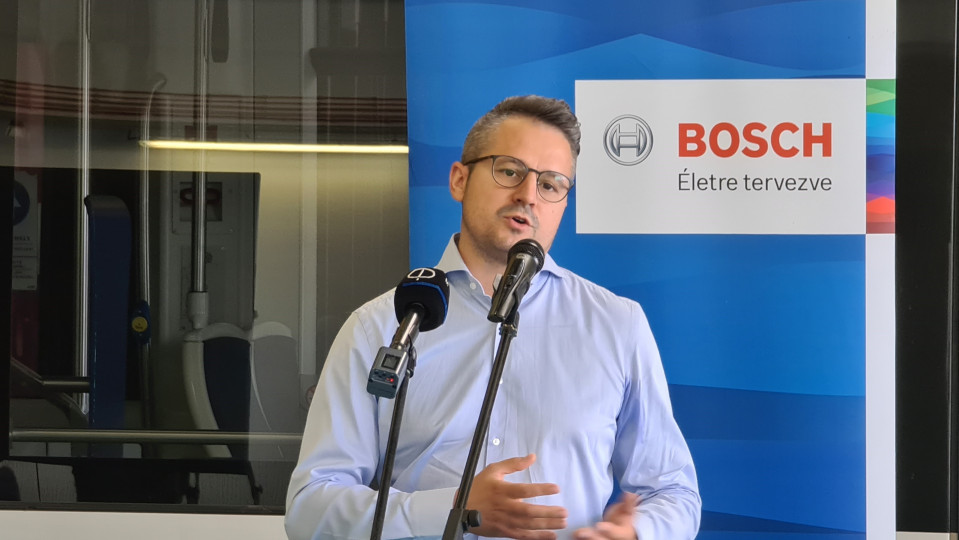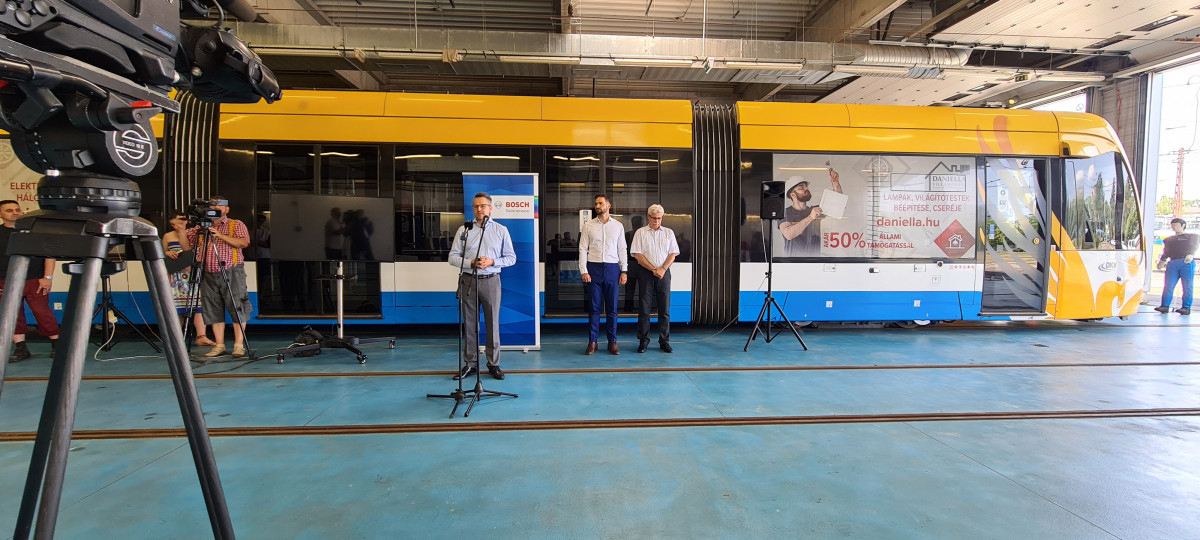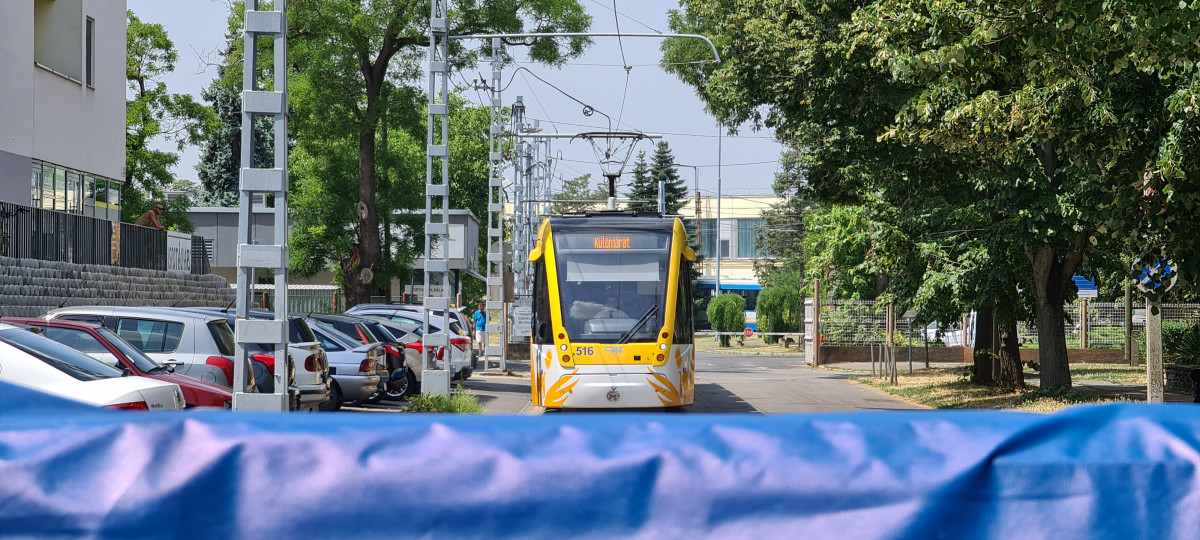Debrecen – For tram drivers, every minute on the job requires maximum concentration. In complex traffic situations collisions with other vehicles can easily occur, resulting in significant damage to property or even serious bodily harm. To prevent this, Bosch Engineering has developed a collision avoidance system to support tram drivers, which will be used for the first time in Hungary on a tram line in Debrecen from July 2021. The collision avoidance technology, which was recently deployed in many German and Dutch cities and is already working successfully, warns tram drivers in case of danger, so they can start to brake much sooner and possibly avoid minor bumps and accidents. “This technology fully embodies Bosch’s slogan; it really was Invented for Life. It helps everyone involved in traffic: pedestrians, passengers, motorists and even tram operators”, said István Szászi, Representative of the Bosch Group in Hungary and Adria Region.
The collision avoidance system was installed on a new CAF Urbos 3 tram. It will be tested jointly by DKV Debreceni Közlekedési Zrt. (Debrecen Transport Company) and Bosch Engineering for six months.
Cutting-edge car technology tailored to trams
The technology was developed jointly by the engineers at the Bosch Engineering Center Budapest and by Bosch Engineering GmbH. The camera and the radar sensor that form the basis of the system are manufactured in the company’s plant in Hatvan. The system designed to prevent tram accidents is based on the same technology as the automatic emergency braking1, which was also developed by Bosch.
The collision avoidance system consists of three main components: multifunction camera, a radar sensor and a control unit that processes the incoming signals and information in a fraction of a second. The specialised data capture camera is an ideal complement to the radar sensor: The former provides an accurate representation of the traffic situation, can track and predict movements. The radar sensor can sense even in fog or rain, so it is “keeping an eye” on the route ahead, detects quickly and accurately anything that crosses the tracks. The control unit processes the data from both sensing modules and compares it to other relevant parameters, such as the current speed of the tram. As soon as the system can see or sense an obstacle – for example, a car that is partly on the tracks or a pedestrian running across the tracks – it provides an optical and acoustical warning for the conductor of the tram. Tram drivers are then able to make their decision faster, for instance they can apply the brakes of the tram.
Bosch Engineering’s system can even apply the brakes of the tram, but for now the automatic braking function is not yet part of the project in Debrecen.
Scanning the route meter by meter
The collision avoidance system must be calibrated individually for each tram. In the development phase, the basic functionalities of the system are already available and proved. The tram equipped with sensors and cameras covered hundreds of kilometres empty, so that the system can learn to see and sense city specific relevant objects, meter by meter which are stored in the pattern library of the development team. Therefore, the system improves with each new line. So the validation process is done individually for each tram line. During that it is tested and verified that all the pylons, trees, bushes and other relevant objects in the immediate vicinity are detected and recognized by the system. It is also approved that the system works properly and does not generate false warnings. The trial operation, which will last six months, will start in mid-July on the tram line 2 to proof safety and to reduce the stress load on drivers. The maximum speed of the tram is 50 km/h, at which speed the Bosch system can detect potential hazards from a distance of around 70 to 80 metres.
A major step forward in road safety
Since the launch of tram line 2 in Debrecen, tram accidents have been very frequent. In five years, there have been 130 accidents on line 2 alone. All 18 trams have crashed at least five times, but some have crashed ten times. Bosch's technology can play a key role in preventing tram accidents, as is confirmed by data from abroad. For example, in one German city, the number of tram accidents fell by more than 40 percent following the installation of collision avoidance technology, while the number of trams in operation increased and traffic increased compared with the base year. The technology not only saves lives, but also significant costs for operators and the system helps to assure a failure free reliable service to the passengers.
1 Assists in avoiding rear-end collisions and those with crossing vehicles and mitigates the consequences.
Zita Hella Varga
Phone: +36 70 667-6374
Bosch has been present in Hungary since 1898 with its products. After its re-establishment as a regional trading company in 1991, Bosch has grown into one of Hungary’s largest foreign industrial employers with currently nine subsidiaries. In fiscal 2020 it had total net sales of 1,497 billion forints and consolidated sales to third parties on the Hungarian market of 238 billion forints. The Bosch Group in Hungary employs more than 15,500 associates (as of December 31, 2020). In addition to its manufacturing, commercial and development business, Bosch has a network of sales and service operations that covers the entire country.
The Bosch Group is a leading global supplier of technology and services. It employs roughly 395,000 associates worldwide (as of December 31, 2020). The company generated sales of 71.5 billion euros in 2020. Its operations are divided into four business sectors: Mobility Solutions, Industrial Technology, Consumer Goods, and Energy and Building Technology. As a leading IoT provider, Bosch offers innovative solutions for smart homes, Industry 4.0, and connected mobility. Bosch is pursuing a vision of mobility that is sustainable, safe, and exciting. It uses its expertise in sensor technology, software, and services, as well as its own IoT cloud, to offer its customers connected, cross-domain solutions from a single source. The Bosch Group’s strategic objective is to facilitate connected living with products and solutions that either contain artificial intelligence (AI) or have been developed or manufactured with its help. Bosch improves quality of life worldwide with products and services that are innovative and spark enthusiasm. In short, Bosch creates technology that is “Invented for life.” The Bosch Group comprises Robert Bosch GmbH and its roughly 440 subsidiary and regional companies in some 60 countries. Including sales and service partners, Bosch’s global manufacturing, engineering, and sales network covers nearly every country in the world. With its more than 400 locations worldwide, the Bosch Group has been carbon neutral since the first quarter of 2020. The basis for the company’s future growth is its innovative strength. At 129 locations across the globe, Bosch employs some 73,000 associates in research and development, of which nearly 34,000 are software engineers.
Additional information is available online at www.bosch.hu, iot.boschblog.hu, www.bosch.com, www.iot.bosch.com, www.bosch-press.com, http://www.twitter.com/BoschPress.

